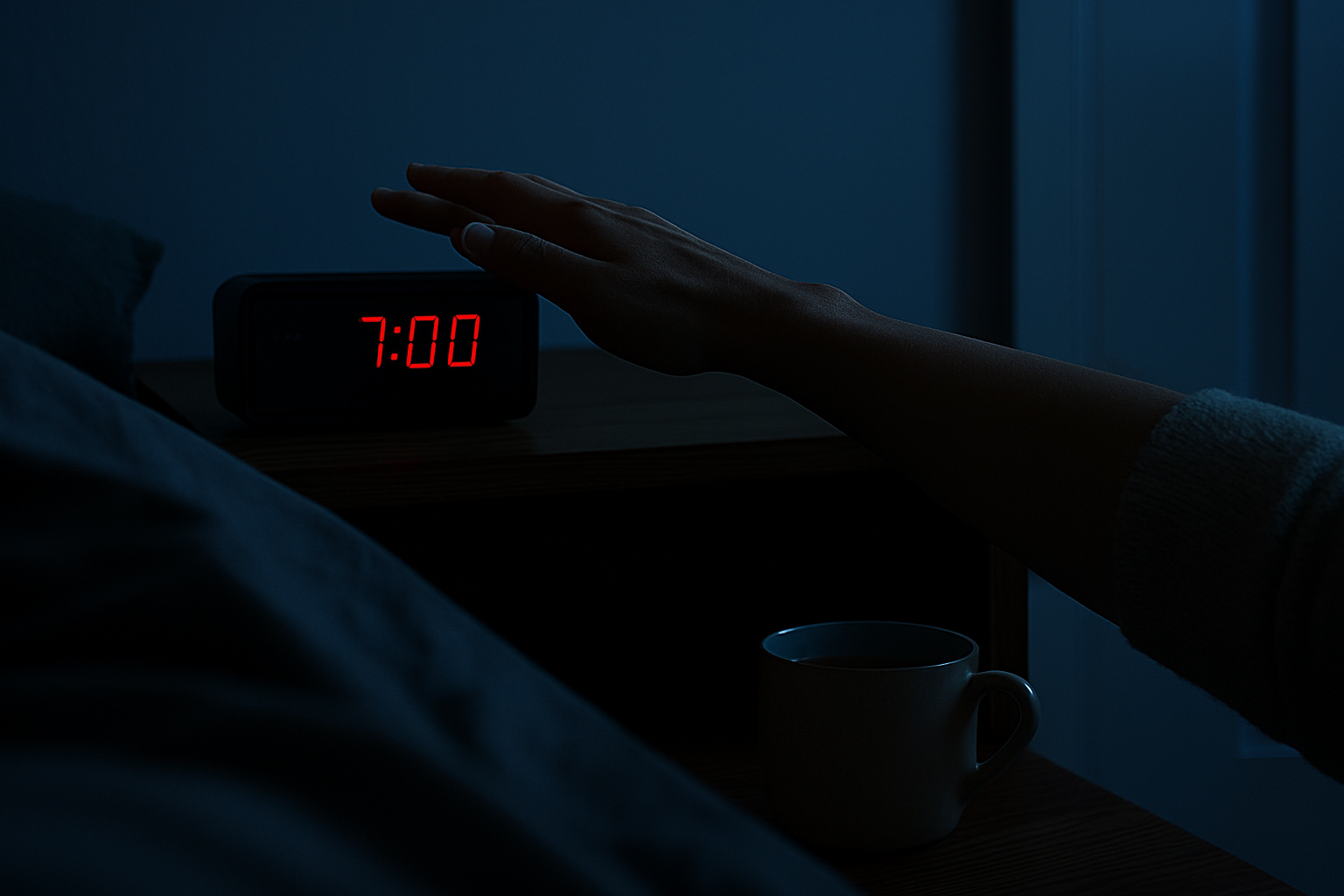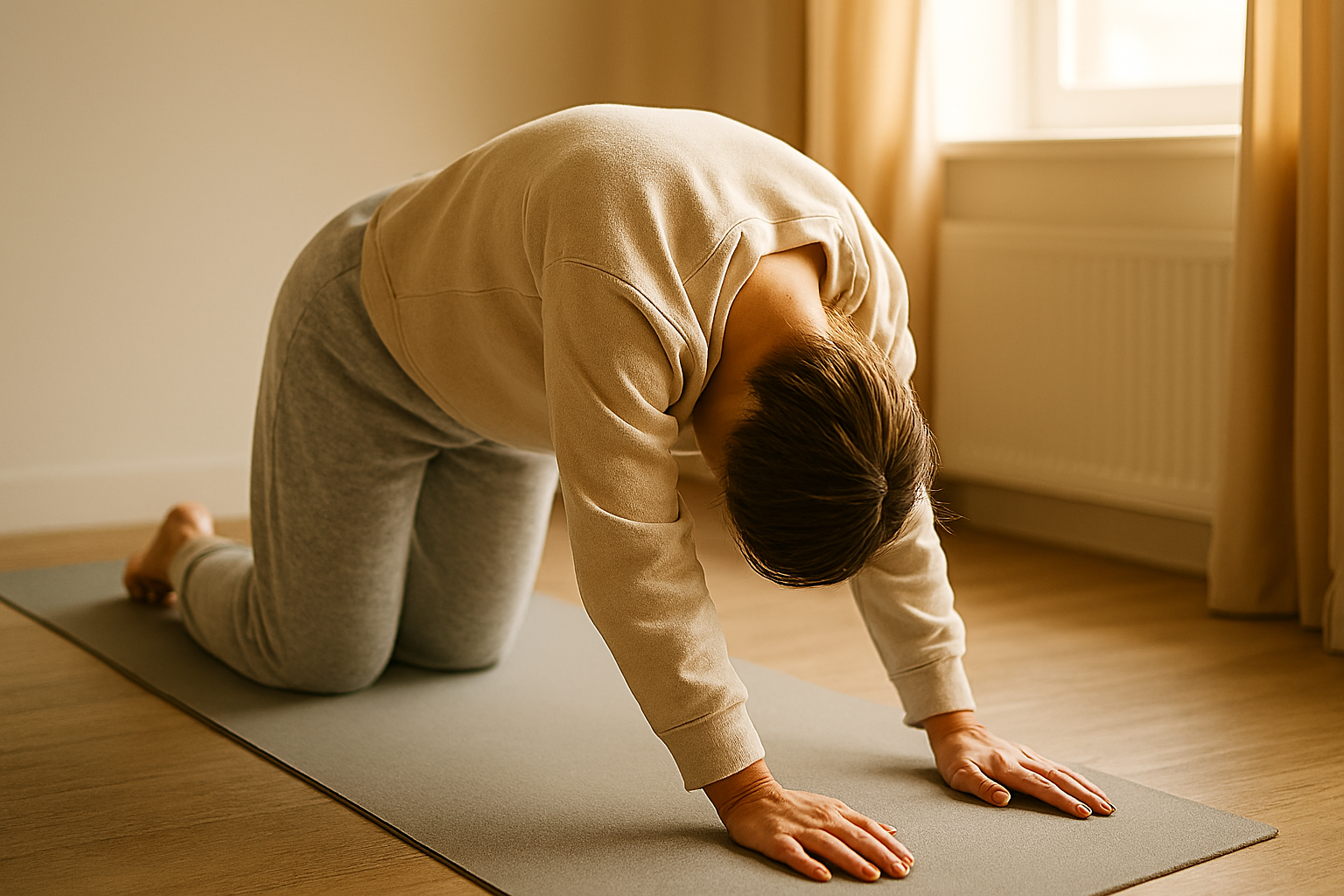I Replaced My Morning Coffee with 15 Minutes of Movement, Here's What Happened.

The sound of my alarm would pierce through the darkness, and my hand would instinctively reach for snooze, sometimes three or four times. Coffee was the first order of business, not because I enjoyed it, but because I desperately needed it. My mornings felt like wading through wet cement, heavy and resistant.

That sluggish routine was my reality for years until I discovered something that changed everything: just 15 minutes of intentional movement first thing in the morning. Not an intense workout. Just simple, gentle movement that awakened my body and mind in ways that caffeine never could. What if the key to sustained energy was not in your coffee cup but in how you transition from sleep to wakefulness?
Why Movement in the Morning Matters
The science behind morning movement is fascinating. Our bodies are not designed to go from complete stillness (sleep) to immediate activity (rushing to get ready). This jarring transition is why many of us feel groggy. When we move gently after waking, several beneficial processes begin:
- Circulation Activation: Movement increases blood flow, delivering fresh oxygen and nutrients to our tissues and brain. This immediate oxygen boost is why you feel more alert.
- Cortisol Regulation: Our bodies naturally produce the "awakening hormone" cortisol in the morning. Synchronized movement helps regulate this cortisol curve, supporting your natural circadian rhythm.
- Lymphatic Stimulation: Our lymphatic system, which removes waste, relies on body movement to function. Morning movement activates this crucial cleansing system after hours of stillness.
- Endorphin Release: Even light movement triggers the release of endorphins, your body's natural mood elevators, creating a positive outlook for the day.
Research in the British Journal of Sports Medicine found that morning physical activity is particularly effective at reducing brain fog and improving cognitive performance throughout the day. The beauty of this practice is not about burning calories; it is about creating a gentle bridge between sleep and wakefulness.

What My 15-Minute Ritual Looks Like
My morning movement ritual evolved into a four-part sequence that feels both energizing and grounding.
1. Intention & Breath (2 minutes) I begin seated on the floor with three deep, full breaths. I place one hand on my heart and set a simple intention for the day, perhaps focusing on patience or presence. The breathwork is simple: inhaling for four counts, then exhaling for six. This extended exhale activates the parasympathetic nervous system, creating a sense of calm alertness.
2. Gentle Awakening Stretches (5 minutes) These stretches focus on areas that feel stiff after sleeping:
- Neck Release: Gentle head tilts and slow half-circles.
- Spinal Awakening: Cat-cow stretches on hands and knees, synchronizing breath with movement.
- Hip Openers: Seated figure-four stretches or gentle hip circles.
- Side Body Lengthening: Seated side stretches to create space between the ribs.
3. Dynamic Movement (5 minutes) This section elevates my heart rate slightly:
- Modified Sun Salutations: A gentle flowing sequence repeated five to six times.
- Standing Twists: Gentle rotations that stimulate the digestive system.
- Mindful Marching: Simply lifting knees while swinging arms to activate both brain hemispheres.
4. Integration & Reflection (3 minutes) The final minutes include a standing balance pose like Tree Pose, three final breaths to notice how my body feels, and a moment of gratitude. This provides a distinct endpoint, allowing me to transition mindfully into the rest of my routine.
Busting Common Myths About Morning Exercise
Many of us avoid morning movement because of misconceptions. Let's clear them up:
- Myth 1: It has to be an intense workout. False. The goal is gentle awakening, not a high-intensity session. A few minutes of stretching can be more beneficial for morning energy than a grueling run.
- Myth 2: You need at least 30-60 minutes. False. Consistency is far more important than duration. A consistent 10-15 minute routine is more effective than one long workout per week.
- Myth 3: You have to be a "morning person." False. This practice can actually help regulate your circadian rhythm over time. If you are a night owl, you might do your movement after being awake for 30 minutes instead of immediately. The key is to listen to your body.
8 Unexpected Benefits I Noticed Within a Week
The benefits extended far beyond what I anticipated.
- Sustained Energy Without Crashes: My energy felt more consistent throughout the day, without the peaks and valleys of caffeine.
- Improved Digestion: Morning movement stimulates the digestive tract, leading to more regularity and less bloating.
- Enhanced Mental Clarity: My brain felt more alert and focused, allowing me to complete tasks more efficiently.
- Reduced Sugar Cravings: Morning movement helps stabilize blood sugar, which naturally reduces cravings for quick energy fixes.
- Improved Posture: The body awareness cultivated in the morning carried into my workday.
- More Mindful Eating Choices: Starting the day with a body-honoring practice created a positive domino effect, leading to more nourishing food choices.
- Better Stress Management: I found myself returning to the breathing patterns from my morning practice during stressful moments.
- Improved Sleep Quality: Morning movement helps set your circadian rhythm, which influences your ability to fall asleep at night.

How to Start Your Own Morning Movement Ritual
Creating your own practice does not require special equipment or extensive time.
- Start with just 5 minutes: If 15 feels overwhelming, begin small.
- Choose movements that feel good: This is not about pushing through discomfort.
- Create environmental cues: Place your yoga mat beside your bed or set out clothes the night before.
- Be flexible: Some mornings might call for flowing yoga, others for gentle stretching or dance.
- Remember consistency trumps perfection: A gentle 5-minute practice done regularly yields more benefits than an occasional "perfect" session.
What continues to amaze me about this practice is its profound simplicity. The key is not in the specific movements but in the intentional transition they provide. It is about claiming those first waking moments for yourself before the world starts making demands on your energy. Your morning sets the tone for your entire day.





